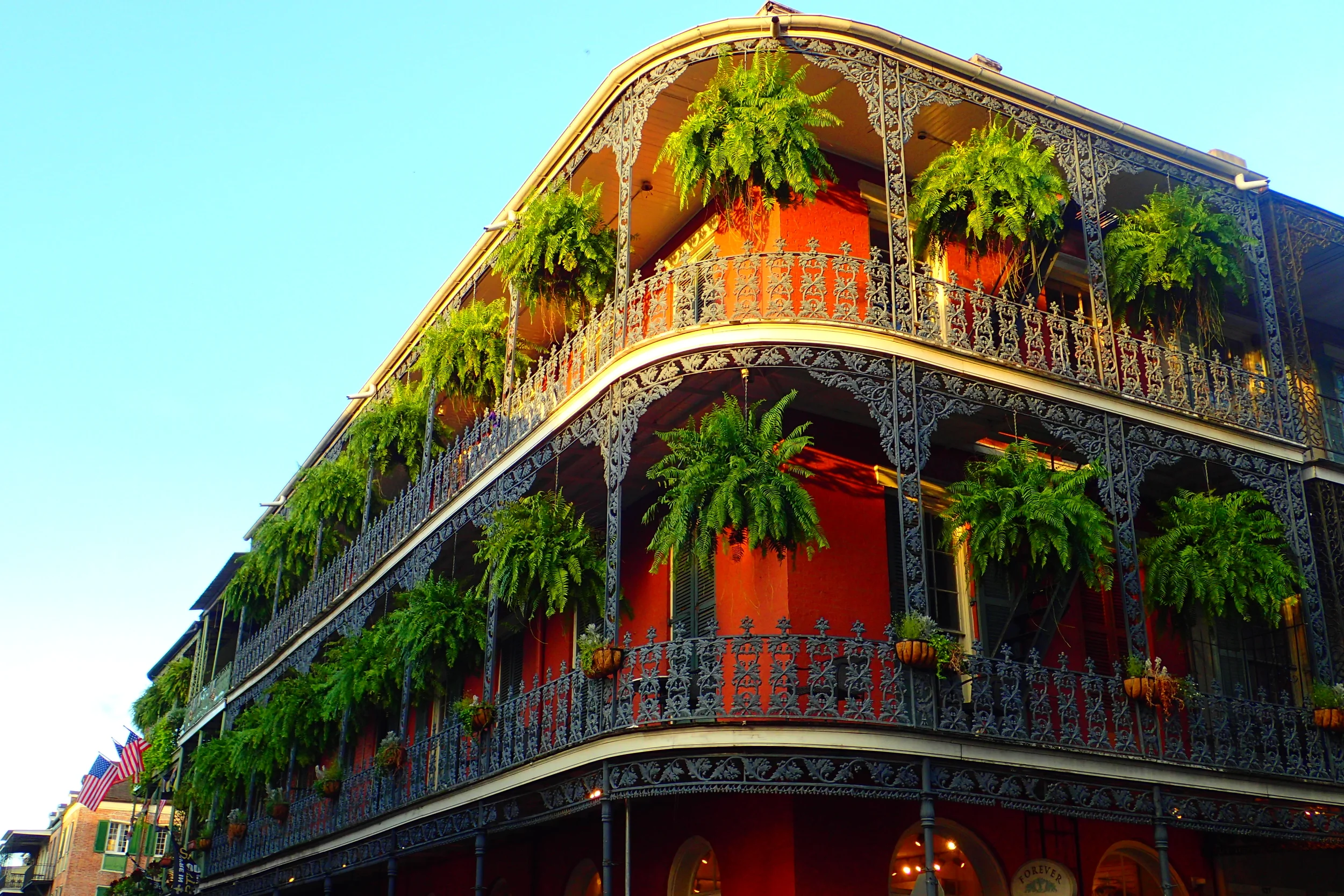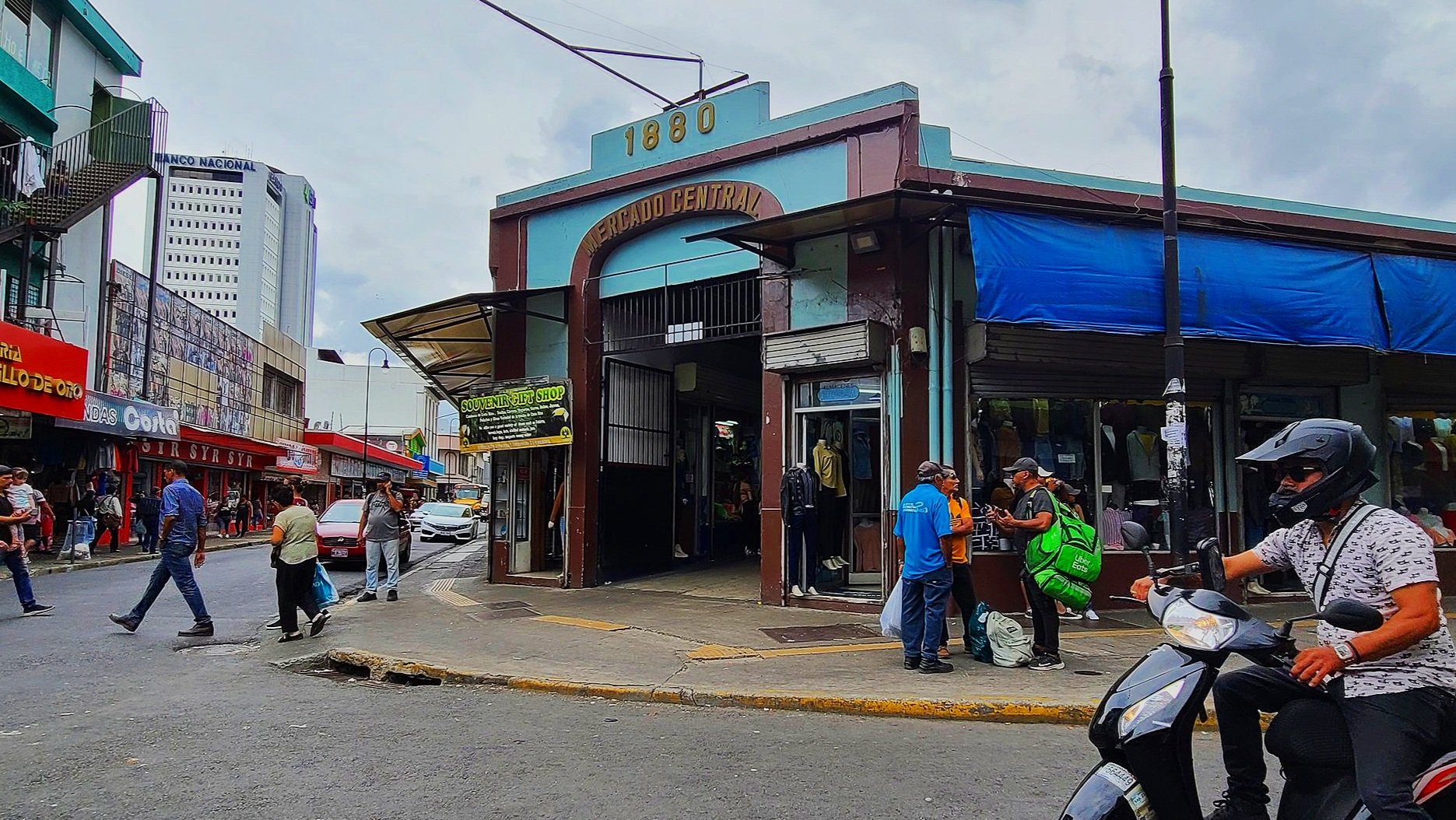This is an introduction to New Orleans from the perspective I saw it: From the streets!
Aptly named the Big Easy, I comfortably explored the majority of downtown New Orleans by foot and street car last month. Jono and I were staying in an Airbnb that put us right at the cross section of several different neighborhoods within walking distance of the famous and lively French Quarter district.
Historic black culture, hurricane damage, enormous mansions, blaring brass instruments, drunken tourists and beignets—each of these characteristics define at least one of five neighborhoods in New Orleans.
Treme
Faubourg Tremé or simply Tremé is a neighborhood that is uniquely historic because it was the main neighborhood where free people of color resided in the late 1700s/early 1800s.
Before the Louisiana Purchase, Congo Square was where slaves gathered to dance on Sundays. Congo Square is found today within Louis Armstrong Park in Tremé .
The rhythms from the Congo Square dances have evolved into modern brass band parades called Second Lines seen marching through the streets on a regular schedule from August to June.
Since we visiting in July, we obviously missed these parades, but the spirit was alive all the same. Jazz Funerals, the Mardi Gras Indian parades, and brass music around New Orleans also reflect the music from those historic gatherings.
Tremé has always been a racially mixed neighborhood. It remains primarily African-American and Creole, as reflected by Dooky Chase, a landmark Creole restaurant and African American Art gallery in Tremé. It is owned by civil rights movement leader and esteemed chef, Leah Chase, who is known as the "Queen of Creole Cuisine."
Dooky Chase is an icon of Tremé and a must visit when in the neighborhood, if for no other reason than to taste Leah's deliciously moist fried chicken.
For a good overview of Tremé, try watching the television series of the same name which is all about post-Katrina life in this neighborhood.
Bywater/The 9th Ward
Possibly the most well-known area of New Orleans in the aftermath of Hurricane Katrina, the 9th Ward experienced some of the most flooding damage putting it in the spotlight on national news.
Almost everyone we spoke to—black or white, local or tourist—told us not to hang around the 9th Ward because of bad crime in the area.
We opted to walk through a safer section of the 9th Ward called Bywater during the daytime at the urging of several locals who demanded we at least try the BBQ cuisine at a hole-in-the-wall called The Joint. It was worth the 30 minute walk there from the French Quarter.
On the way we spotted lots of excellent street art and a few other delightful little land marks.
There was great street art, Dr. Bob's quirky gallery/shop, the bright and bold Elizabeth's real food done real good (apparently the praline bacon is a must), and an epic record store that had listening stations with local music at the ready. In short, we were happily surprised by all the fun distractions we found walking along Chartres Street to the Joint in Bywater.
Bywater also has some important historical roots. Homer Plessy's famous act of civil disobedience defying segregation law in rail cars on the East Louisiana Railroad took place there.
There's a marker in Bywater at the exact location where he was removed from the car and arrested (the corner of Press and Royal Streets). While I didn't spot it on my walk through there, I did have the opportunity to visit Plessy's tomb in nearby Tremé.
The French Quarter
Vieux Carré, meaning Old Square, is known today as the French Quarter. My absolute favorite part about walking this section of New Orleans was the Creole townhouses with their second and sometimes third story balconies up above.
The intricate, wrought-iron railings and hanging plants set against brightly painted siding was so incredibly satisfying to look at.
I never tired of this New Orleans architecture and still gawk at the photos I snapped.
There are many notables around the French Quarter. There is St. Louis Cathedral and Jackson Square for local art and fortune tellers. Voodoo and witchcraft shops with kitschy, spookified knick-knacks. Cafe Du Monde has their famous beignets and cafe au lait to try.
Then there's Delphine LaLaurie's home, famous for its 19th century murder mystery which was featured in season 3 of American Horror Story. The Gumbo Shop has traditional Creole cuisine.
Also, partiers can traipse around Bourbon street and experience all kinds of drunken shenanigans. They shut down the whole street at night so you can walk bar to bar, drink in hand, as if you're in Vegas.
Frenchman Street/Marigny
Faubourg Marigny, or simply Marigny, is a cute little neighborhood that used to be the plantation of Bernard de Marigny, a wealthy Creole political leader. He eventually divided up his property into the neighborhood.
Today, there are lots of Creole cottages in the area. They are one-story homes some of which are over 100 years old. I loved the ones that were painted in bright colors.
Frenchman street runs through the area and is what locals call the new Bourbon Street. The neighborhood has more of an authentic, local crowd and it's much calmer than the loud, raucous beer fest that Bourbon Street tends to be.
But don't get me wrong, Frenchman Street is loud in its own way. There's tons of popular live music venues, little coffee shops, mom and pop bars and restaurants, bookstores, and artists markets to keep this place lively.
Brass bands will stand on street corners at all hours into the night blaring away into the street and strolling out into gathering crowds for tips.
Pop into a venue like the Spotted Cat and you'll see live, local acts put on an eargasm of a show. We were lucky enough to be there on a night when a bunch of social swing dancers showed up creating natural two-for-one entertainment.
Garden District
Jono and I took the St. Charles street car through this wealthy neighborhood one morning. From our window, we could admire all the extravagant homes lining both sides of the road.
In the 19th century, affluent newcomers to the New Orleans area started building ostentatious homes mansions just outside the French Quarter. The area rests where plantations used to be. After the Civil War, wealthy Americans bought pieces of the plantations to build their homes so they could avoid the other neighborhoods where Creoles resided.
Each block of homes was surrounded by a garden but these gardens would diminish over the years as New Orleans was urbanized. Those large gardens are what originally gave the Garden District its name.
Personally, I found the area to have beautiful gardens despite the urbanization. Each home had impeccable curb appeal—just check out some of those sculpted shrubs out front!
There are some notable mansions in the district, such as Beyonce and Jay-Z's home on Harmony Street off St. Charles.
My favorite was spotting MTV's Real World Season 9 location at the Belfort Mansion.
In Conclusion
Every neighborhood I came across in New Orleans was rich in its own unique culture, history, and atmosphere. I fell in love the most with the architecture and colors and the stories and famous landmarks found in each location.
I can't wait to share more about this incredible American city—like that they bury their dead above ground, but now they are sinking into the earth anyway! No wonder voodoo, ghost stories, and other spooky tales make up a huge part of this city's character! I'll share more about the spooky side of New Orleans in a future post.





